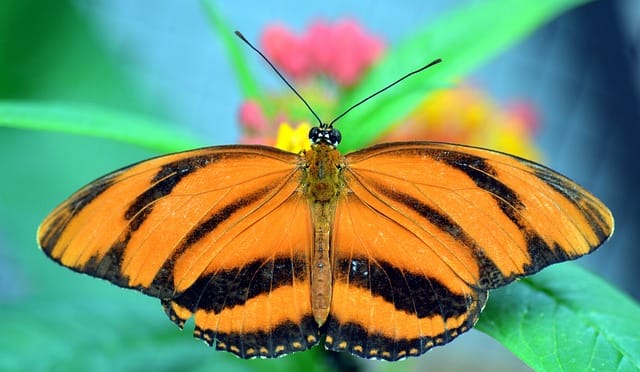How to grow Passionflower (Passiflora)
Welcome to this comprehensive guide on how to grow and care for the Passionflower, also known as Passiflora

In this article:
- Introduction
- Overview of Passionflower
- Choosing the Right Variety
- Soil and Sunlight Requirements
- Planting Passionflower
- Watering and Fertilizing
- Pruning and Training
- Controlling Pests and Diseases
- Supporting the Climbing Habit
- Propagation Methods
- Harvesting and Utilizing Passionflower
- Winter Care Tips
- Frequently Asked Questions
- Conclusion
Introduction
Welcome to this comprehensive guide on how to grow and care for the Passionflower, also known as Passiflora. Passionflowers are beautiful and exotic climbers that add a touch of elegance to any garden or home. In this article, we will explore various aspects of growing and maintaining the Passionflower plant.
Overview of Passionflower
The Passionflower is a fast-growing vine known for its striking flowers and edible fruit. It belongs to the Passifloraceae family and is native to tropical and subtropical regions. Passionflowers are known for their unique and intricate flower structure, which is why they are also commonly referred to as "passion vines."
Choosing the Right Variety
Passionflowers come in various varieties, each with its unique characteristics and growing requirements. Some popular varieties include Passiflora incarnata, Passiflora caerulea, and Passiflora edulis. Consider factors such as climate, available space, and your preferences when choosing a variety that suits your needs.
Soil and Sunlight Requirements
Passionflowers thrive in well-draining soil with a pH level between 6.5 and 7.5. They require a minimum of 6 hours of direct sunlight daily to grow and flower successfully. Ensure the planting location receives ample sunlight and amend the soil with organic matter to improve drainage.
Planting Passionflower
Plant your passionflower in the springtime when the soil has warmed up. Dig a hole twice the width of the root ball and place the plant in the hole, ensuring that it is at the same depth as it was in the container. Backfill the hole with soil and gently tamp it down. Water thoroughly after planting.
Watering and Fertilizing
Passionflowers require regular watering, especially during dry spells. Always water deeply to encourage deep root development. However, be careful not to overwater as it can lead to root rot. Apply a balanced fertilizer once a month during the growing season to promote healthy growth and abundant flowering.
Pruning and Training
Pruning is essential to maintain the shape and size of your passionflower plant. In late winter or early spring, prune away any dead or damaged growth. You can also selectively prune to control the size and shape of the plant. Passionflowers can be trained to climb trellises, fences, or walls with the help of supports such as wires or strings.
Controlling Pests and Diseases
Passionflowers are generally resistant to pests and diseases. However, they may occasionally be attacked by aphids, scale insects, or caterpillars. Regularly inspect your plants and take appropriate measures, such as using organic insecticides or applying insecticidal soap, to control pest infestations. Proper hygiene practices and maintaining good airflow can also help prevent diseases.
Supporting the Climbing Habit
Passionflowers are naturally vigorous climbers and require support to grow and reach their full potential. Install a trellis or provide a framework, such as a fence or wall, for the plant to attach itself. Gently guide the vines towards the support structure as they grow.
Propagation Methods
Passionflowers can be propagated through various methods, including seed sowing, stem cuttings, or layering. Each method has its advantages and considerations. Choose a propagation method that suits your requirements and follow the appropriate techniques to ensure success.
Harvesting and Utilizing Passionflower
Passionflower plants produce delicious fruit that can be harvested and enjoyed. The fruit is typically ripe when it turns from green to a purplish color. Avoid consuming unripe fruit as it may cause stomach discomfort. Apart from their culinary uses, passionflowers have also been used traditionally for their medicinal properties, including promoting relaxation and reducing anxiety.
Winter Care Tips
While passionflowers are generally hardy, some varieties may require protection during winter in colder regions. Mulch around the base of the plant to insulate the roots from freezing temperatures. Consider covering the plant with a frost cloth or moving container-grown passionflowers indoors to prevent damage from frost.
Frequently Asked Questions
How long does it take for passionflowers to bloom?
The time it takes for passionflowers to bloom can vary depending on the variety and growing conditions. Generally, passionflowers start blooming within the first two to three years of planting.
Can passionflowers be grown in containers?
Yes, passionflowers can be grown in containers. Choose a large enough container with good drainage and provide support for the vine to climb. Ensure the container is placed in a sunny location and water regularly.
Are passionflowers toxic to pets?
Passionflowers are not considered highly toxic to pets. However, it is always best to prevent pets from consuming excessive amounts of any plant. If you suspect your pet has ingested large quantities of passionflower, contact a veterinarian.
Conclusion
Growing and caring for passionflowers can be a rewarding and enjoyable experience. By following the guidelines outlined in this article, you can create a thriving passionflower vine that will turn heads with its stunning flowers and delicious fruit. Remember to provide the right conditions, regular care, and plenty of support to help your passionflower flourish.
